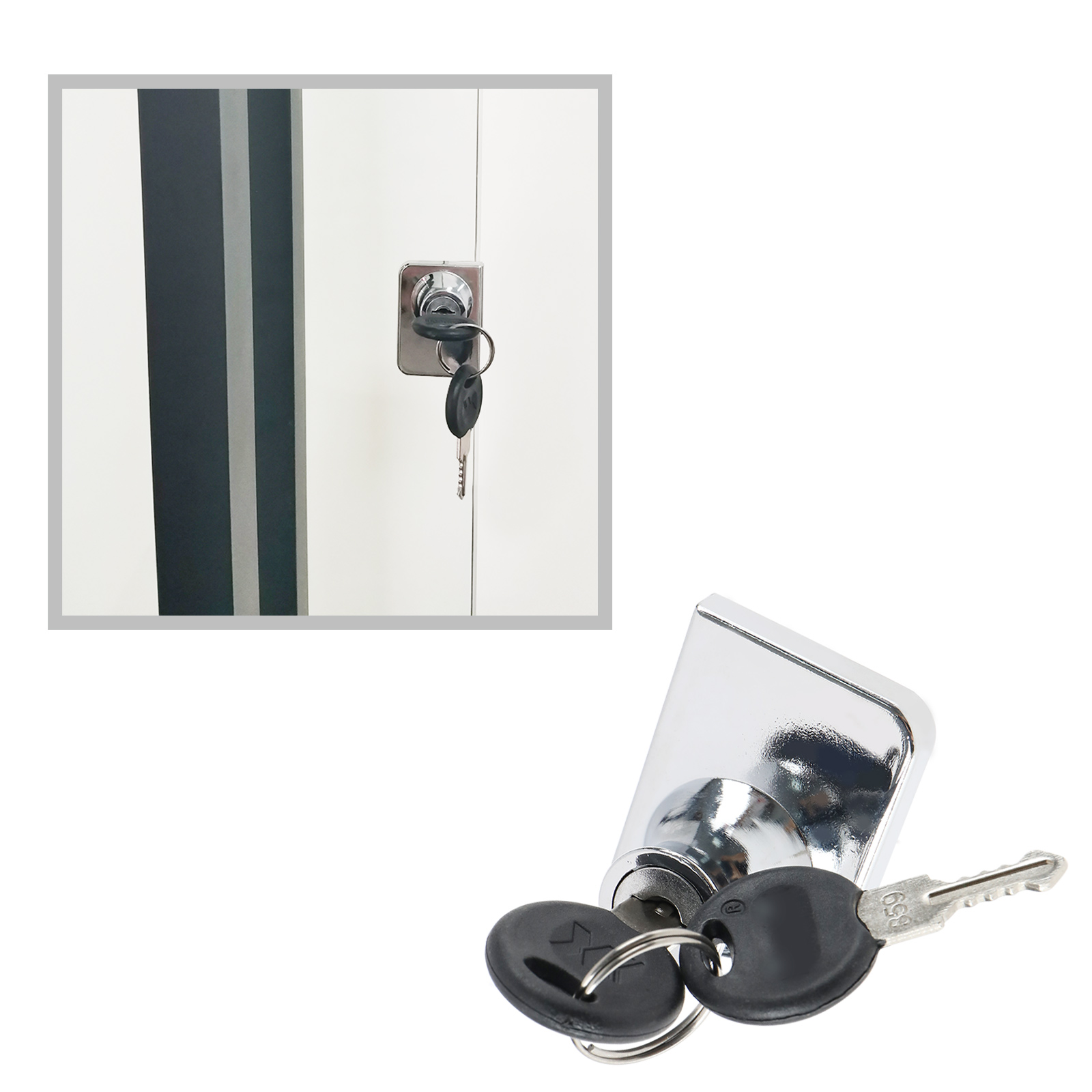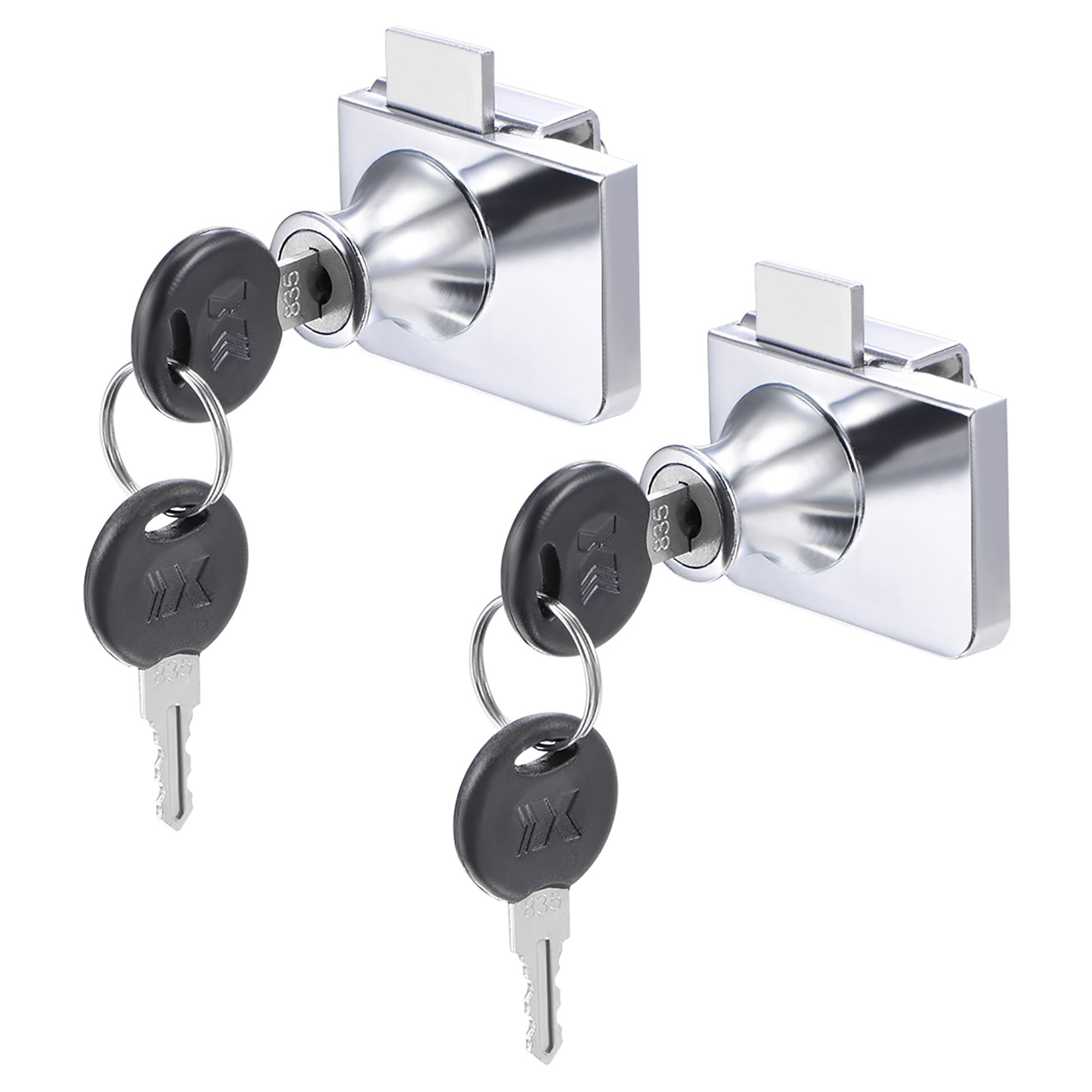Installation and Maintenance of Glass Door Locks

Installing and maintaining glass door locks for display cabinets is crucial to ensure the security and longevity of your valuable items. These locks come in various designs, each with its own installation method and maintenance requirements. Understanding these differences is essential for a successful and secure installation.
Installing Glass Door Locks
Installing glass door locks requires careful planning and precision to avoid damaging the glass. It’s important to choose the right type of lock for your display cabinet and have the necessary tools and materials.
- Types of Glass Door Locks:
- Flush Mount Locks: These locks are installed directly on the glass surface and have a low profile. They are ideal for cabinets with limited space and are typically secured with adhesive or screws.
- Surface Mount Locks: These locks are mounted on the outside of the glass door and offer greater security. They are often used for larger display cabinets and are typically secured with screws.
- Mortise Locks: These locks are installed in a recess in the glass door and are typically used for thicker glass doors. They offer the highest level of security and are often used for high-value items.
- Tools and Materials:
- Drill: A drill with a diamond-tipped bit is needed to drill holes in glass for screws or mounting plates.
- Screwdriver: A screwdriver is needed to secure the lock and any mounting plates.
- Measuring Tape: A measuring tape is needed to accurately measure the position of the lock on the glass door.
- Level: A level is needed to ensure that the lock is installed straight and level.
- Glass Cutting Tool: For mortise locks, a glass cutting tool is needed to create a recess in the glass door.
- Epoxy Adhesive: Some flush mount locks may require epoxy adhesive to secure them to the glass surface.
- Installation Steps:
- Step 1: Choose the Lock: Select the appropriate type of lock based on your display cabinet’s size, glass thickness, and security needs.
- Step 2: Measure and Mark: Measure the position of the lock on the glass door and mark the installation points with a pencil.
- Step 3: Drill Holes (if necessary): If using screws or mounting plates, drill holes in the glass door at the marked points using a diamond-tipped drill bit.
- Step 4: Install the Lock: Secure the lock to the glass door using screws or adhesive, depending on the type of lock.
- Step 5: Test the Lock: Once the lock is installed, test it to ensure that it is working properly and securely.
Maintaining Glass Door Locks
Regular maintenance is essential for keeping glass door locks functioning properly and preventing them from becoming damaged or worn out. A simple checklist can help you ensure that your locks are properly maintained.
- Cleaning: Regularly clean the lock mechanism with a soft cloth and a mild cleaning solution. Avoid using abrasive cleaners or harsh chemicals that could damage the lock.
- Lubrication: Apply a light lubricant to the lock mechanism to prevent rust and corrosion. A silicone-based lubricant is recommended for glass door locks.
- Lock Replacement: If the lock is damaged or worn out, replace it with a new one. It is essential to use a compatible lock that is designed for glass doors.
Security Considerations for Display Cabinets with Glass Doors: Display Cabinet Glass Door Locks

Display cabinets with glass doors are popular for showcasing valuable items, but they also present unique security challenges. The transparent nature of glass makes it easy to see what’s inside, attracting potential thieves, and the fragility of glass can make it vulnerable to vandalism. Understanding the potential threats and choosing the right security measures is crucial to protecting your valuable items.
Types of Security Threats
Display cabinets with glass doors are susceptible to various security threats, including theft, vandalism, and unauthorized access. These threats can come from both internal and external sources.
- Theft: Display cabinets are prime targets for theft, especially those containing high-value items. Thieves may attempt to break the glass, pry open the doors, or use tools to bypass the locks.
- Vandalism: Glass doors are vulnerable to vandalism, which can range from minor scratches to complete shattering. Vandalism can be motivated by malicious intent or simply recklessness.
- Unauthorized Access: Display cabinets may be accessed by unauthorized individuals, such as employees or visitors, who may attempt to steal items or tamper with the contents.
Lock Types and Installation Techniques to Mitigate Security Threats, Display cabinet glass door locks
Selecting the right lock type and installation techniques is critical for enhancing the security of display cabinets with glass doors. Here’s a breakdown of key considerations:
- Lock Types:
- Deadbolt Locks: These locks offer excellent security by engaging a bolt into the frame, making them difficult to force open.
- Padlocks: Padlocks are a versatile option, suitable for securing doors, drawers, or even entire cabinets. Choose high-quality padlocks with hardened steel shackles for maximum resistance to tampering.
- Magnetic Locks: Magnetic locks are often used in conjunction with other security measures, such as alarms, to provide an additional layer of protection. These locks use strong magnets to keep the doors securely closed.
- Electronic Locks: Electronic locks offer enhanced security features, such as access control, audit trails, and remote monitoring capabilities. They can be programmed to restrict access to authorized individuals.
- Installation Techniques:
- Reinforced Frames: Use reinforced frames made of sturdy materials, such as steel, to resist attempts to pry open the doors.
- Concealed Hinges: Concealed hinges make it more difficult for thieves to remove the doors from the cabinet.
- Security Glass: Consider using laminated or tempered glass, which is more resistant to breakage than standard glass.
Choosing the Right Lock for Specific Security Needs
When choosing a lock for your display cabinet, consider the value of the items being displayed and the level of security required.
- High-Value Items: For high-value items, such as jewelry, antiques, or artwork, consider using multiple security measures, including high-quality locks, reinforced frames, and security glass.
- Moderate-Value Items: For items of moderate value, a combination of a sturdy lock and reinforced frame may be sufficient.
- Low-Value Items: For items of low value, a basic lock and standard glass may be adequate.
Additional Security Considerations
- Surveillance: Install security cameras to monitor the display cabinet and deter potential thieves.
- Lighting: Adequate lighting can deter crime and make it easier to identify potential threats.
- Alarms: Consider using alarms that are triggered by unauthorized entry or attempts to tamper with the display cabinet.
